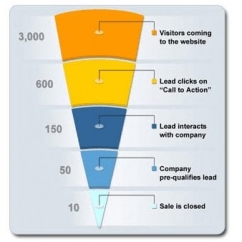Jewelry ECOMM Tech
Implementing Drip Campaigns In Jewelry Marketing March 12, 2019 (0 comments)
 In this article, we'll learn what a "drip campaign" is, and how to use this strategy in our jewelry marketing (with a step-by-step guide).
In this article, we'll learn what a "drip campaign" is, and how to use this strategy in our jewelry marketing (with a step-by-step guide).
Many small businesses have dismissed email in recent years and have switched focus to other areas, like social media. However, I’m here to say with complete clarity that email is still an absolute powerhouse. I think the first thing that comes to mind when we think of email marketing is email newsletters. Email newsletters are a fantastic way to re-engage customers who already know and like our business. However, much of the time, they’re too general for specific marketing goals. You see, typically a company has a single email newsletter they blast out to everyone on their email list. This lack of personalization often makes email newsletters a mediocre choice at closing sales. A great alternative choice you can try implementing are “drip campaigns”.
What Is A Drip Campaign?
A drip campaign is an automated series of emails that gets sent to customers in sequential order. Think of what your company sends in their email blasts. It’s probably a bunch of different things, but you send it out to everyone on your list in hopes that something in your email newsletter catches their attention. This is a bad idea. If a user keeps seeing your newsletter and it doesn’t contain anything they’re interested in, they’ll unsubscribe. You’ve now lost the chance to turn that person into a customer. A drip campaign, on the other hand, is specifically designed to send the user a series of emails over time that brings that further down the buying funnel.
Personalization Is Why It Works
Imagine you have a newsletter opt-in box on your website, that enables a website visitor to enter their email address to receive your periodic newsletter. Great!. Maybe they’re impressed with your brand and are curious to stay up to date with what you have to say. This is different than someone submitting their email address for a specific purpose. A customer who enters their email for a specific topic should not suddenly start getting emails that have nothing to do with what they wanted. You should only send them what they specifically asked for. The second you simply add this potential customer to your newsletter and send them things they didn’t choose to receive, they’re usually going to unsubscribe. This has happened to me. On many occasions, I have made an online purchase, and the the store simply adds me to their newsletter because I purchased something from them. I never said I wanted to subscribe to the newsletter. Therefore, by definition, the newsletter is spam. I’ll no longer be a customer. Creating a drip campaign not only makes sure the person gets relevant information to their interests, but it allows you to nudge them - with targeted message - closer to a buying decision.
Drip Campaign + Funnels
Our friends at GemFind published an article on this site a couple days ago about Funnels. A funnel represents the visitor’s buying journey - from their very first time researching a topic, all the way through to their buying moment. There are a few different opinions and modules that agencies use to represent the sales funnel. A great basic one, as GemFind mentioned, is AIDA. Attention- This is where you want people to start recognizing your jewelry store and what you offer. You are not selling anything at this stage. Interest- The target is interested in you, your store, or the jewelry you are offering. The key at this stage is to keep their interest and move them to the next stage. Desire- This is when the customer wants to make the purchase and has to have that beautiful ring or bracelet. Salesmanship or a small promotion might nudge the target to the final stage. Action- You target has acted and is now a customer. A drip campaign enables us to send emails to a user that get them further to the ACTION stage. Each email we send them should be based on where they are in the buying phase. How do we know which stage they’re at? One way to know is to see which emails they’re opening and which they’re ignoring. We can then automate emails to them in the next buying stage based on their interaction with our previous emails.
An example: Ahrefs
"Ahrefs" is the SEO software I use. When I joined, I received a nice series of emails from one of their staff with videos teaching me how to use their software. Now, I’m no idiot - I know these emails were not hand-crafted specifically for me. It’s an email sequence It was an automated series of emails that I received every few days with a new tip on how to use their software. This is not a drip campaign designed to make me a new customer. It’s a drip campaign designed to keep me as a happy customer, by learning how to use their tools well.
How To Create A Drip Campaign
Things to consider:
- What the initial lure will be
- What we’ll be emailing them
- How often we’ll be emailing them
The Lure
In order for our email marketing to work, we need a good list of prospects - duh! So how do we grow our marketing list? The best way is to create a “lure” on your website, as I call them. A lure is something that you put on your website to offer someone in exchange for their email address. A common strategy is to offer some kind of informative PDF, coupon, or other material for the visitor to download. In order for them to download it, they will need to submit their email address so they can get emailed the info. You’ve now ethically collected their email address and can send them follow up marketing based on the type of information they showed interest in downloading.
What They’ll Receive
When I first learned about these strategies, they called this an “irresistible offer”. You need to make sure you’re giving your visitor something really awesome if you expect them to give you their email address. Think about this carefully. During this process, you’ll also need to decide how far apart to space the emails you’ll be sending as a follow up. Will you send them the next email in the sequence every 3 days? Etc.
Adding The Lure To Your Website
There are simple ways to connect your email marketing software’s opt-in form to your site. Place the form wherever you think is best and will stand out. Then, connect this form to whichever list you want the new contacts going to (since this is a new campaign, you’ll probably want to create a new list). Lastly, you’ll need to configure your email marketing software to send out the promised document to someone when they are added to the list. This is optional - if you don’t want to use a lure, and simply want to place an opt-in form to receive more information on a topic, that’s fine too. You’ll just probably get less collected email addresses.
Step-by-step Configuration
The best part of this strategy is how simple it is to implement. No special coding is required, no mathematical formulas to figure out. It’s as simple as selecting a couple settings in your email marketing software (Constant Contact and Mailchimp are the most popular). Here’s how to do it in Mailchimp. The process is likely similar for Constant Contact or whichever program you use.
Step 1
First, click to start a new email. Then, simply click on “Automated”.
Give your campaign a name and click “Begin”.


Step 2
You’ll be given a few templates to choose from. You can choose one of theirs or create your own workflow.

Step 3
Choose the email list you want new contacts to be added to.

Step 4
Choose "frequency" and what the “trigger” will be. This means the time between each sent email, and what causes the next email in the sequence to be sent.




